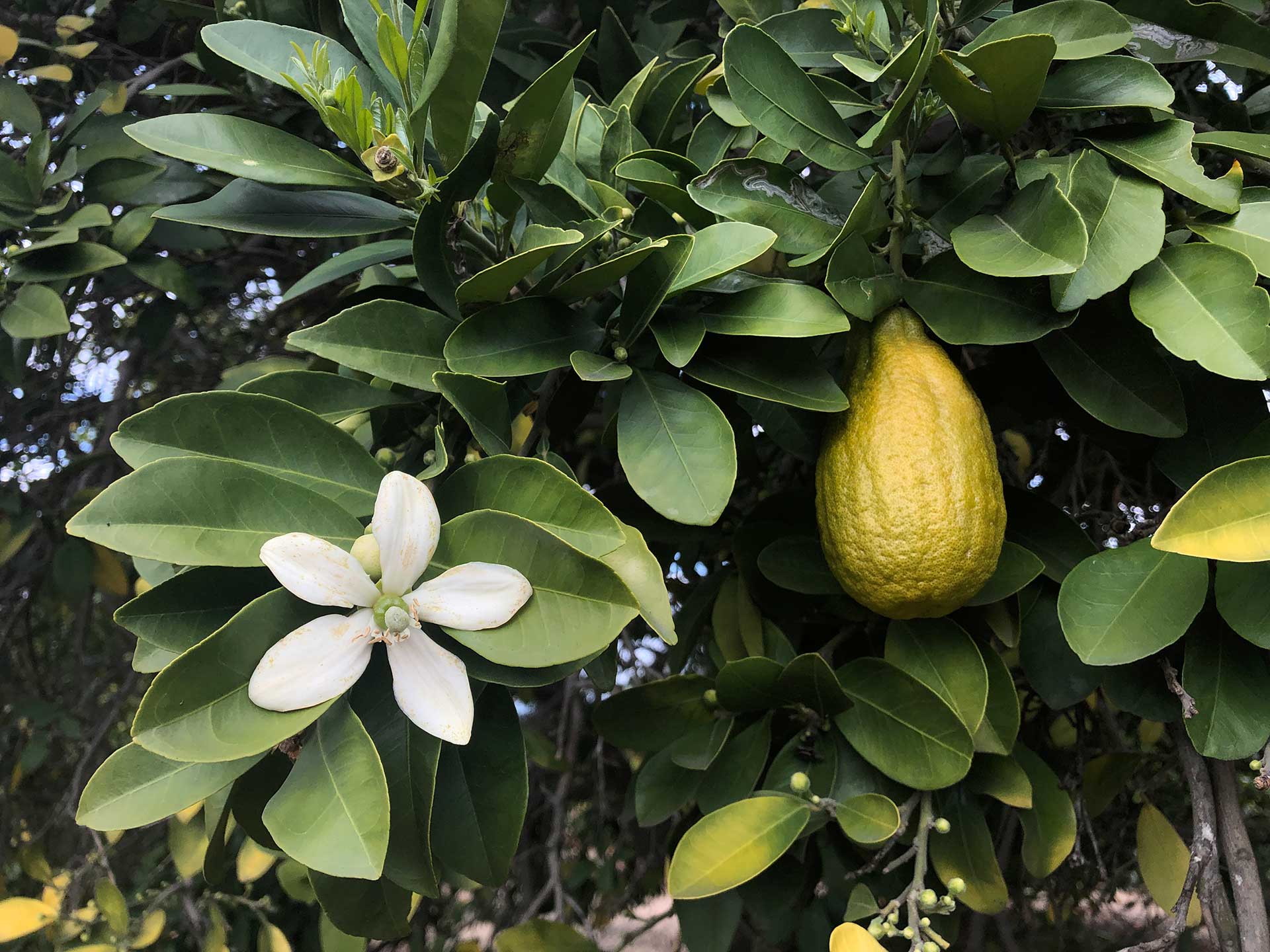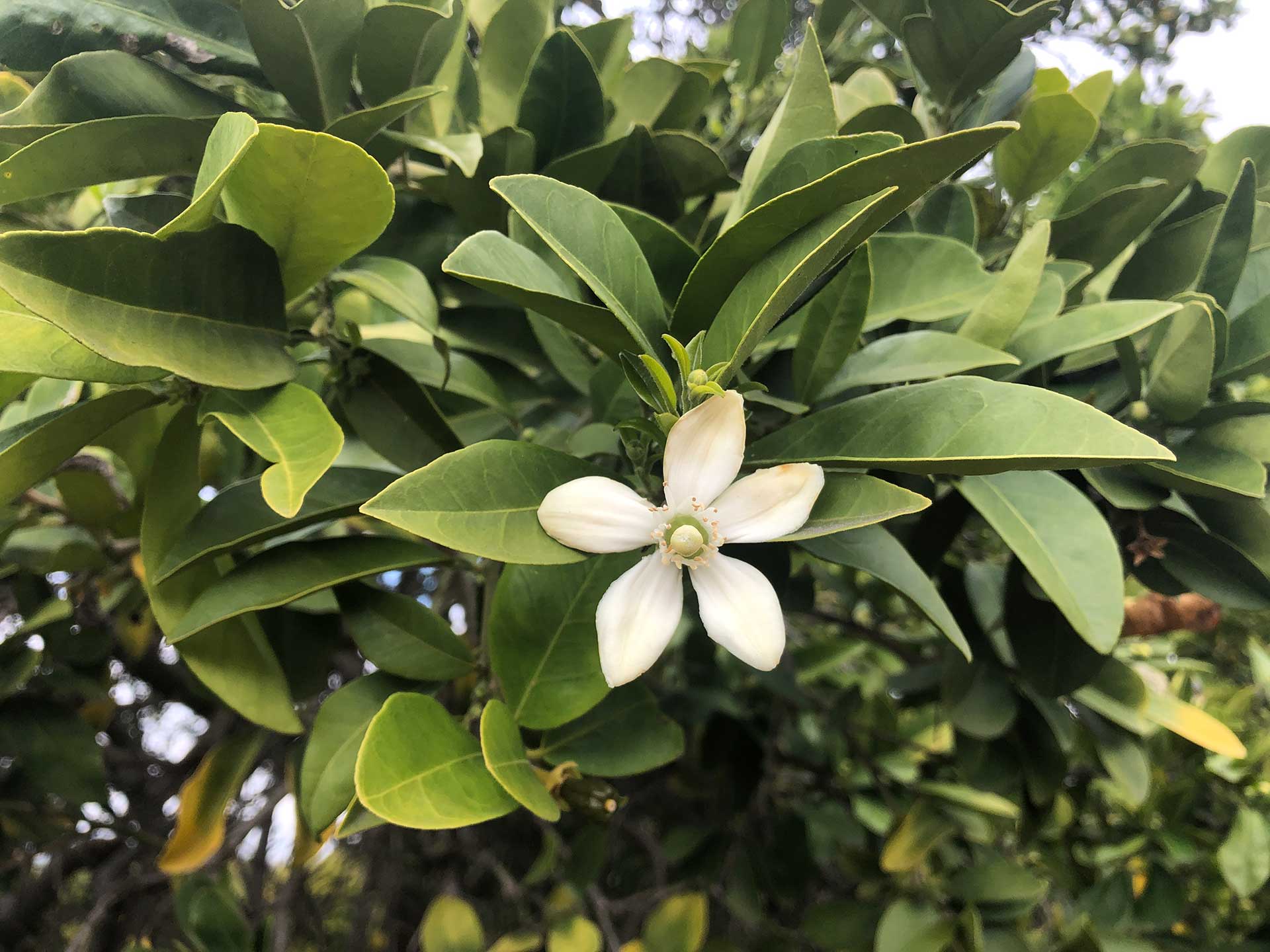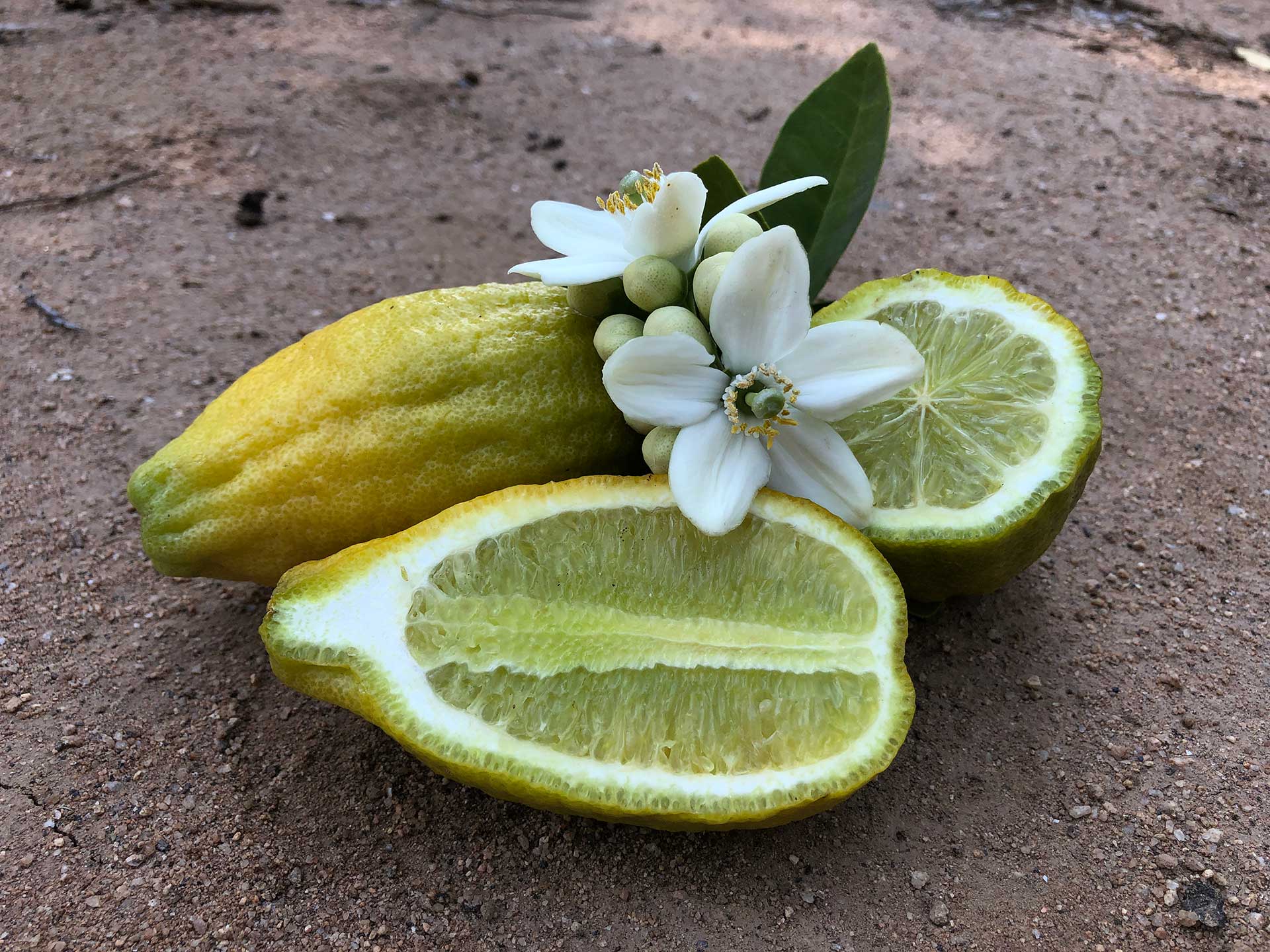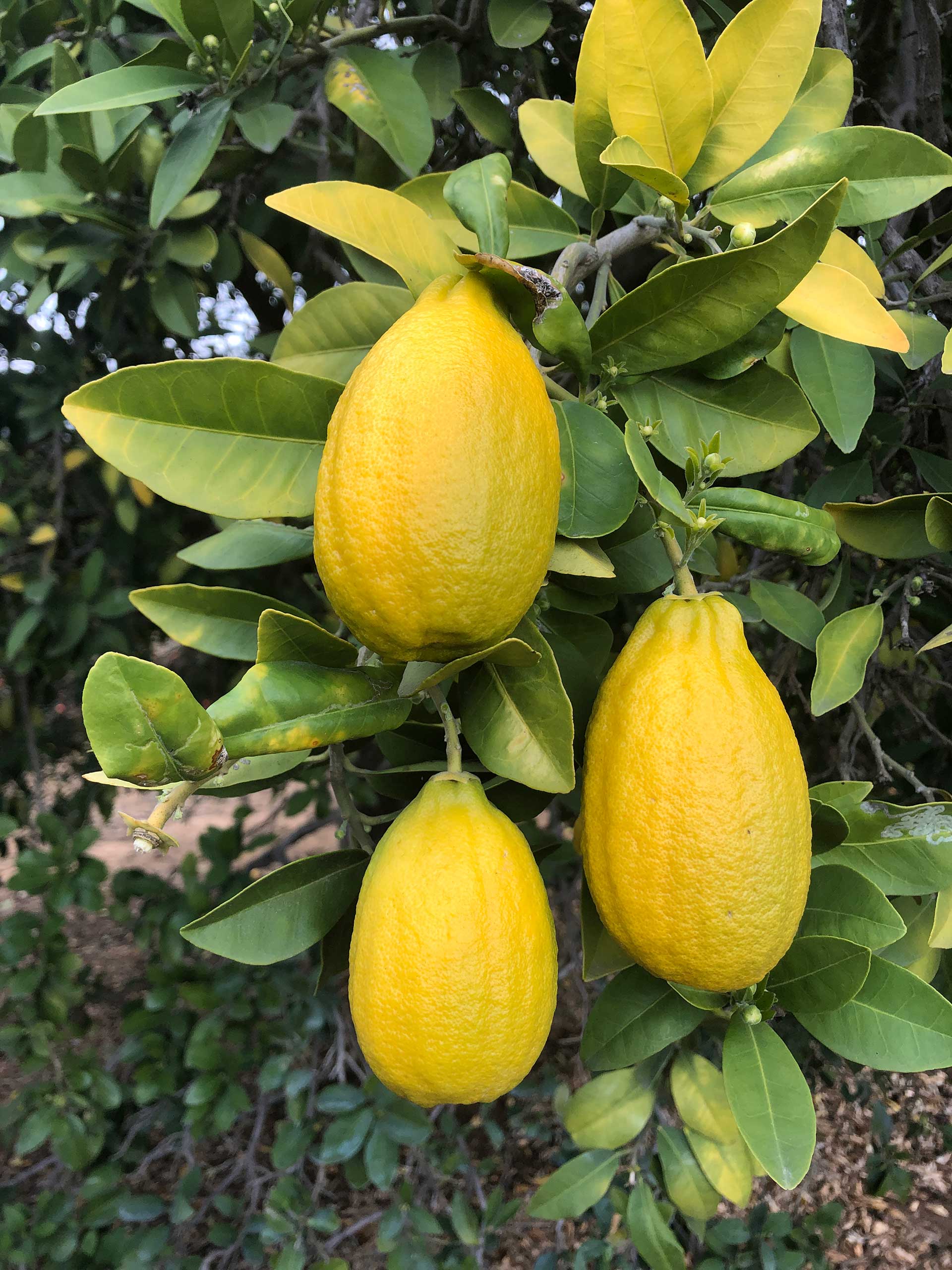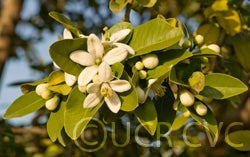Large-leaf oxanthera or false orange
CRC 3793
PI 539671
Source
Received as seed from Dick Hamilton, Hawaii, 1978.
Parentage/origins
Parents unknown.
Rootstocks of accession
Yuma Ponderosa Lemon
Season of ripeness at Riverside
Year-round
Season of flowering at Riverside
December to March
Notes and observations
EMN, 12/22/1987: This came in labelled "Oxanthera species". It is NOT oxanthera, appera to be a papeda.
Fruit almost all on ground. Leaves have wide winged petiole. Fruit about the size and shape of a Bearss lime, with ridged neck. Very smooth, yellow rind. Very thin rind, green flesh, very sour; probably seedless (one fruit sampled).
EMN, 10/19/1988: Most of fruit already on ground this date. Four fruits cut & one seed found. Leaves are thick and leathery. Fruit description of 12/87 still OK.
JB, 1990: Rind has a nice frangrance like tropical fruits.
RRK and OJB, 2000: This is not a papeda, although it was misidentified as "unknown papeda hybrid" for some time. Since it was received as Oxanthera sp., it was keyed out (RRK, OJB) using the key on p 255 of Swingle and Reece (1967) andd generally matches the description of O. neo-caledonica on p 257.
RRK, 08/2007: Malcolm Smith of Australia's DPI observed some wild Oxanthera spp.. He stated in an email dated May 10, 2004 (on file at NCGRCD) that our specimen did not resemble the plants he observed in the wild, particularly in regard to leaf morphology. He did note that Swingle stated that Oxanthera is a highly variable genus. Ottillia 'Toots' Bier opined that the differences in leaf morphology might be due to climate and cultural care. However, these differences (which indeed are rather pronounced) must make the identification of this accession questionable. Note: The information in Swingle and Reece (1967) is unchanged from the original in Swingle (1943).
Description from The Citrus Industry Vol. 1 (1967)
"Guillaumin's detailed description of this plant reads, in translation, as follows: "Spineless shrub, 1 m high, with whitish flowers; young branches with a waxy bloom that gradually disappears. Leaves very coriaceous, glabrous even when very young, lanceolate or obovate, 6-8 cm long (including the petiole), 1-4 cm wide, narrowed toward the base, attenuate toward the apex, but not acute when lanceolate, suborbicular or orbicular when obovate, sometimes emarginate. Midrib and lateral veins prominent on both sides but especially on the underside (like veins of the hand). Petiole distinctly articulated [with the leaf blade], 1-2 cm long, slightly winged (less than 4 mm). Flower [bud] (a single one) terminal on a young branch, spherical (14 mm diam.); pedicel 7 mm long, cylindric, glabrous; sepals 5, 2 mm long, nearly round; petals 6, unequal, ovate (12 X 6-12 mm), thick and fleshy, with inconspicuous, small, pellucid oil glands; stamens 24, unequal (8-11 mm), [arranged] very irregularly in fascicles, filaments rather fleshy, not flattened, anthers triangular-elongate, 2.5 mm long, the locules diverging slightly at the base; ovary subcylindric (3.5 X 3 mm), 7-ribbed, with 7 segments; style cylindric, 2 mm long, stigma cylindric. Fruit (immature) ovoid-subcylindric, supported on pedicels covered with whitish bloom, more than 1.5 cm long and 2 mm diam.; more mature fruits 2.5 X 1.5 cm, with 7 segments, peel thin, pulp mucilaginous, seeds of unknown color.
"Presqu'ile de Poume, in volcanic soil, May, 1871 (Balansa, No. 3374).
"Although the color of the embryo is not known, the affinities [or this plant] seem to be especially with Citrus Aurantium L. but the form and the aspect of the leaves, of the flowers and of the ovary, clearly distinguish this species."
Tanaka (1928b, p. 44) noted that the flowers are like those of O. fragrans and O. aurantium but that "the surface of the petals is completely uniform [not papillose or marked with evident oil glands], the ovary is shorter, the stigma not dilated and the disk much larger." He went on to say: "The fruit is oblong, sometimes curved, pointed, with superficial ribs, with about 7 segments, containing large seeds with a single very hard embryo. The pulp-vesicles are not very much developed and are gummy." He was of the opinion that the lack of true pulp-vesicles excludes this species from the True Citrus Fruit Trees even though it does have more than twice as many stamens as petals.
This species, as Tanaka remarked, shows a higher organization than most of the other Minor Citroid Fruit Trees. It has seven locules in the ovary and, in common with the other species of Oxanthera, more than twice as many stamens as petals, instead of only twice as many, as is characteristic of the other genera of the subtribe Triphasiinae."
Availability
Not commercially available in California.
USDA Germplasm Resources Information Network page for Oxanthera neo-caledonica
